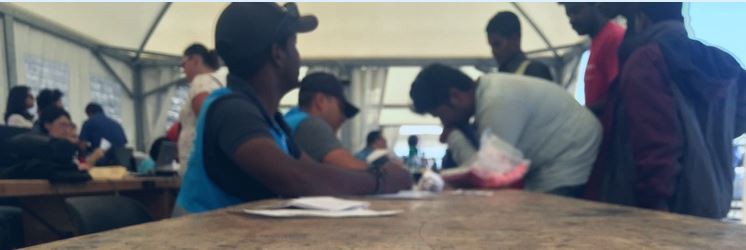In early 2017, Bangladeshis were the second largest nationality among the irregular migrants arriving in Italy from Libya, accounting for one out of every eight migrants taking the Central Mediterranean sea route. In recent months, they made up barely 4 per cent of all arrivals.
News
Why are there fewer Bangladeshi migrants arriving in Italy in recent months?
2017-09-15

Frontex analysts tried to answer the question why nationals of Bangladesh, unlike nationals of other Asian countries with similar push factors, were able to make this journey in such numbers and why this happened almost exclusively on the Central Mediterranean route.
An analysis of intelligence gathered from migrants, as well as data from open sources, revealed a system of facilitated illegal migration based on work visas issued by Bangladeshi recruitment agencies.
Most of the interviewed Bangladeshi migrants, who continue to arrive to Italy from Libya, claimed to have travelled to Libya directly from Bangladesh, transiting Gulf countries or Turkey.
With a work visa in hand, the Bangladeshi migrants flew to Libya through the United Arab Emirates, Istanbul or Qatar. They paid some EUR 7000 for the trip to Libya.
After arriving in Libya, the migrants were immediately taken to safehouses by local people smugglers, who would make arrangements for the sea crossing. The same networks later provide facilitation services to the migrants on their way to the EU. Their passports taken away, the Bangladeshis were provided with temporary employment, at serious risk of abuse, while the preparations for the onward trips were made.
After more than 8000 Bangladeshis reached Italy in the first half of the year, their numbers fell considerably. This sharp drop in the number of Bangladeshi migrants could be linked to measures taken both in Bangladesh and Libya.
In May, Bangladeshi authorities stopped issuing work visas to Libya and announced that those, who will still travel to the country are assumed to do so illegally. Law enforcement agencies have stepped up their efforts to stop human trafficking and organised awareness campaigns to discourage people from travelling to Libya.
Another factor was a ban introduced by Libyan authorities issuing visas-on-arrival to people from Egypt, Morocco, Sudan, Syria and Bangladesh at the Tripoli airport.
The reduced number of Bangladeshis arriving in Italy is also linked to the different factors reducing migration from Libya.